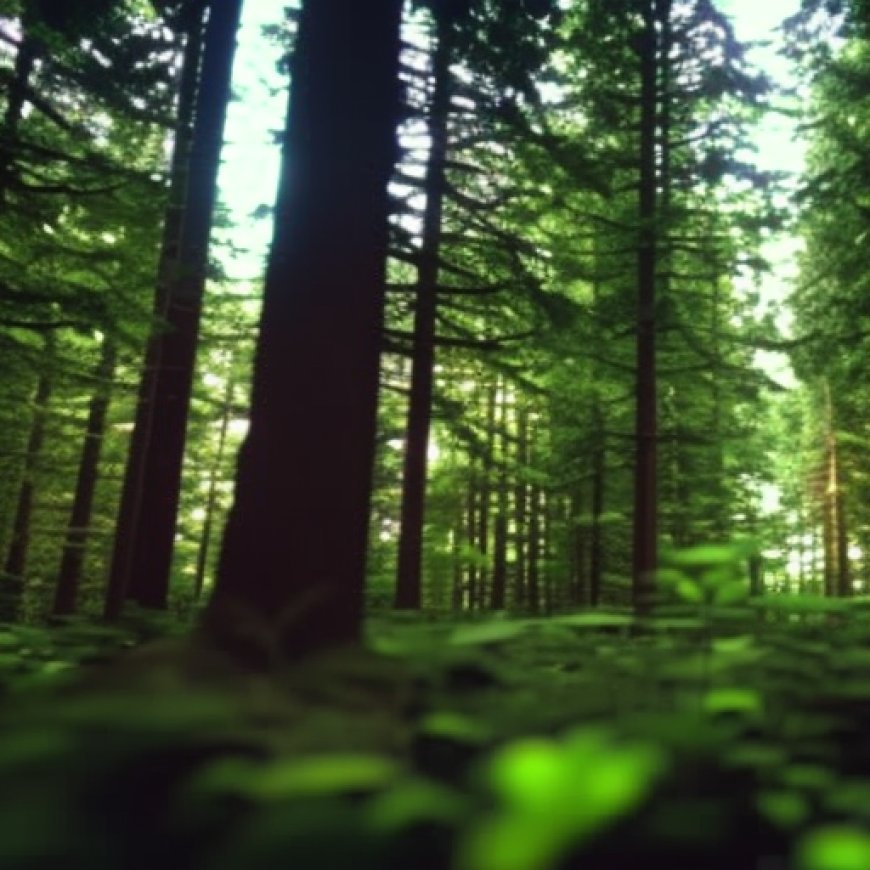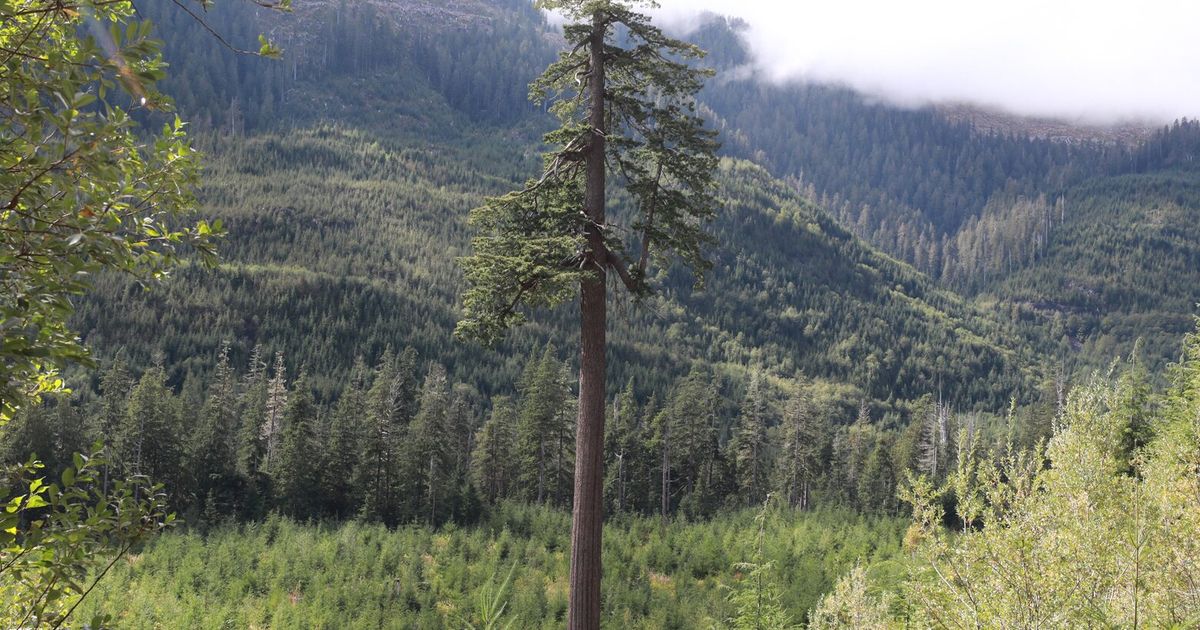Old-growth forest plan offers protections, but no ban on cutting


Old-Growth Forest Preservation Plan Released by U.S. Forest Service

The U.S. Forest Service has unveiled a plan to protect old-growth forests, bringing attention back to these ancient trees. The plan is a response to President Joe Biden’s directive in April 2022, which aimed to safeguard mature and old-growth forests on national forestlands in order to preserve biodiversity and combat climate change.
Proposed Amendment to Management Plans
The plan is a proposed amendment to management plans for national forests. However, it falls short of the expectations of some advocates, as it does not include a complete ban on cutting old-growth trees. It also does not specifically prioritize the preservation of maturing forests to allow them to become old growth in the future. Instead, the plan grants forest managers the flexibility to adjust forest policies based on prevailing conditions, while ensuring the preservation of the health of old-growth forests.
This proposal aims to establish a consistent policy across the national forest system to promote the long-term resilience of old-growth forests and their ecological contributions, which would be a new directive for some land managers.
Defining Old Growth
Old growth refers to forests that are 150 years or older, characterized by structural complexity and species diversity. While there is no single definition of old growth, certain attributes such as structural complexity are consistent. This means that old-growth trees have shaggy bark, stag-headed and broken tops, and cavities. A structurally complex forest includes trees of various age classes, dead and fallen trees, and a variety of species.
An older forest, also known as a mature forest, is at least 80 years old.
Threats to Old-Growth Forests
Insects, fire, and diseases exacerbated by climate change pose the greatest threats to old-growth forests in the Western United States, according to a review of forest conditions that informed the plan. Past management practices, including timber harvesting and fire suppression, have contributed to the vulnerabilities of old-growth forests.
Reactions to the Proposed Amendment
Initial reactions to the proposed amendment have been polarized. The American Forest Resource Council, an industry group, has criticized the initiative as bureaucratic red tape and a politically motivated scheme that would impede responsible tree harvesting without effectively addressing the primary threat to old growth: fire. On the other hand, the Sierra Club forest campaign manager, Alex Craven, expressed support for the amendment and emphasized the need to prioritize the preservation and expansion of old-growth forests across the country.
The public has 90 days to provide comments on the plan, starting from Friday. The Forest Service aims to finalize this effort before President Biden’s term ends in January 2025.
Logging Projects and Forest Management
Meanwhile, numerous federal logging projects are targeting mature and old-growth trees, according to environmental group Earthjustice. The Bureau of Land Management and the Forest Service collectively manage approximately 112 million acres of old-growth and mature forests on federally managed lands. These forests play a crucial role in providing habitat for wildlife and storing carbon, contributing to efforts to combat climate change.
Commenting on the Plan
The proposed national amendment will be available for public comment in the Federal Register starting from Friday. Online comments can be submitted via a web form: https://cara.fs2c.usda.gov/Public//CommentInput?Project=65356. Alternatively, letters can be sent to the following address:
Director, Ecosystem Management Coordination
201 14th Street SW, Mailstop 1108
Washington, D.C. 20250—1124
Additional Considerations for the Northwest Forest Plan
In addition to the national plan on old-growth policy, there is a separate plan focused on old growth in the Northwest region that is currently being reviewed. A draft environmental impact statement on a portion of the Northwest Forest Plan is expected to be released later this summer. The Northwest Forest Plan Federal Advisory Committee is also continuing its work on the amendment.
The Northwest Forest Plan, adopted in 1994, initially protected 24 million acres of ancient forest in Washington, Oregon, and Northern California. However, changes in environmental conditions and the invasion of barred owls have posed new challenges to the preservation of old growth. The fate of over a million acres of old growth designated for potential logging within the Northwest Forest Plan is now being reevaluated.
For more information, please contact Lynda V. Mapes at lmapes@seattletimes.com. Lynda specializes in coverage of the environment, natural history, and Native American tribes.
SDGs, Targets, and Indicators
-
SDG 15: Life on Land
- Target 15.2: By 2020, promote the implementation of sustainable management of all types of forests, halt deforestation, restore degraded forests, and substantially increase afforestation and reforestation globally.
- Indicator 15.2.1: Progress towards sustainable forest management.
- Indicator 15.2.2: Progress towards halting deforestation and restoring degraded forests.
-
SDG 13: Climate Action
- Target 13.1: Strengthen resilience and adaptive capacity to climate-related hazards and natural disasters in all countries.
- Target 13.2: Integrate climate change measures into national policies, strategies, and planning.
- Indicator 13.1.1: Number of deaths, missing persons, and directly affected persons attributed to disasters per 100,000 population.
- Indicator 13.2.1: Number of countries that have integrated mitigation, adaptation, impact reduction, and early warning into their national policies, strategies, and planning.
Analysis
The article discusses the U.S. Forest Service’s plan to preserve old-growth forests, which is connected to SDG 15: Life on Land. The plan aims to protect mature and old-growth forests to preserve biodiversity and combat climate change. This aligns with Target 15.2 of SDG 15, which promotes sustainable management of forests and halting deforestation. The plan also addresses the threats to old-growth forests, such as insects, fire, and disease, which are exacerbated by climate warming (related to SDG 13: Climate Action).
The specific targets identified in the article are Target 15.2 of SDG 15, which focuses on sustainable forest management and halting deforestation, and Target 13.1 of SDG 13, which aims to strengthen resilience and adaptive capacity to climate-related hazards and natural disasters.
The article mentions indicators that can be used to measure progress towards the identified targets. Indicator 15.2.1 measures progress towards sustainable forest management, while Indicator 15.2.2 measures progress towards halting deforestation and restoring degraded forests. For SDG 13, Indicator 13.1.1 measures the number of deaths, missing persons, and directly affected persons attributed to disasters, and Indicator 13.2.1 measures the integration of climate change measures into national policies, strategies, and planning.
SDGs, Targets, and Indicators
| SDGs | Targets | Indicators |
|---|---|---|
| SDG 15: Life on Land | Target 15.2: By 2020, promote the implementation of sustainable management of all types of forests, halt deforestation, restore degraded forests, and substantially increase afforestation and reforestation globally. | Indicator 15.2.1: Progress towards sustainable forest management. Indicator 15.2.2: Progress towards halting deforestation and restoring degraded forests. |
| SDG 13: Climate Action | Target 13.1: Strengthen resilience and adaptive capacity to climate-related hazards and natural disasters in all countries. Target 13.2: Integrate climate change measures into national policies, strategies, and planning. |
Indicator 13.1.1: Number of deaths, missing persons, and directly affected persons attributed to disasters per 100,000 population. Indicator 13.2.1: Number of countries that have integrated mitigation, adaptation, impact reduction, and early warning into their national policies, strategies, and planning. |
Source: seattletimes.com








